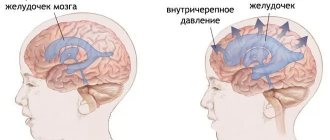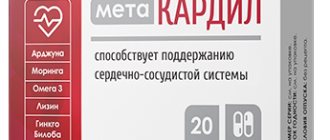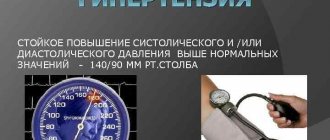Blood pressure is a value that shows how hard the blood presses on the walls of blood vessels. It is an important indicator of the state of the human cardiovascular system.
It happens that, under the influence of certain factors, a pressure reading of 100 to 100 appears on the tonometer, which plunges people into a state of panic.
Is this kind of blood pressure dangerous, and what to do in this case - further in the article.
What does 100 x 100 pressure mean?
The normal pressure is considered to be 120/80. The difference in ratios should be no more than 30-40 mmHg. Art.
However, even in completely healthy people, these indicators can change depending on certain conditions (physical activity, emotional outbursts, fatigue).
When evaluating the measurements taken, it is necessary to pay attention to the value of the upper and lower blood pressure indicators.
Systolic is the upper blood pressure in the vessels at the moment of maximum contraction of the heart.
Diastolic is the lower blood pressure in the arteries when the heart muscle relaxes.
A decrease in the parameters of the upper value to 100 mm and an increase in the lower value to the same figure indicates isolated diastolic hypertension and requires close attention to this problem.
Other reasons for indicators
If the person measuring blood pressure recorded an upper reading of 100 and a lower reading of 100 mm Hg, do not immediately panic. Especially if previous measurements showed normal results, or with slight deviations in systole and diastole.
Perhaps the problem is that the tonometer is broken:
- Incorrect operation of the measuring unit - a strange result was recorded due to damage to the cuff or tubes.
- Incorrect display of results - if the measurement is performed using an automatic or semi-automatic device, the numbers on the display may be partially reflected. For this reason, a person sees incorrect indicators.
- Incorrect functioning of the electronic part - here, a distorted recording of the result may be associated with a discharged battery of the tonometer, or a short circuit in the electronic part.
Not only a breakdown of the tonometer can explain the appearance of strange numbers when measuring blood pressure.
The second reason is a violation of the correct technique of the measurement process itself. For example, automatic devices are equipped with marks that indicate how to correctly position the cuff on the arm in relation to the arteries. At the location of this mark there is a sensor that reads data: if the cuff is placed incorrectly, the blood pressure readings also change in the wrong direction.
The tonometer may also give an error due to problems with pumping air into the cuff. In automatic devices, the process occurs arbitrarily; here the problem lies in the breakdown of the boost pump. Semi-automatic and manual models can give a result of 100/100 due to pumping or, conversely, lack of air in the cuff.
If pressure is measured using a manual tonometer, a person may make a mistake in determining the results, since automatic models themselves produce the final numbers. Another reason for incorrect blood pressure measurement results is a violation of the procedure algorithm. When a person talks, laughs, is in a moving position or touches the cuff during the measurement, the result will also be distorted.
What to do in such a situation
When a tonometer produces 100/100 results, it is important to make sure that these indicators are correct and that no errors were made during the measurement. If there is any doubt about the reliability of the final figures, the measurement should be carried out several more times, following the instructions. You should also make sure that the tonometer is in good working order: inspect it externally; perhaps damage will be found on the tube or cuff; if necessary, on the automatic model, you need to change or charge the battery.
Another option is to measure your pressure with a second tonometer, if you have one at home, or ask your friends (neighbors) for one. You should take any measures and contact a doctor if the second machine also recorded the numbers 100/100, and before that you should not panic, especially if there have been no previous complaints about strange readings from the device. As it became clear, blood pressure readings of 100/100 are not a reason to immediately suspect a serious illness.
If the numbers seem strange when measuring pressure readings, it is worth repeating the measurement using another tonometer
Initially, you need to make sure that the tonometer produces the correct numbers when measuring. If such indicators are recorded more and more often, you should not treat yourself or completely ignore the symptoms. Such tactics will lead to undesirable consequences, aggravate existing health problems and harm the patient. Competent drug treatment, coupled with lifestyle changes, diet and moderate physical activity will help stabilize blood pressure and prevent dangerous consequences.
Causes of pathology
The following factors influence blood pressure readings:
- excessive physical activity;
- hereditary predisposition;
- insufficient amount of iodine in the body;
- overwork;
- nervous breakdowns;
- stimulants contained in coffee and tea;
- misuse of medications;
- unsuitable climatic conditions;
- hormonal disorders in pregnant women;
- obesity;
- chronic diseases;
- poor nutrition;
- weather changes (atmospheric pressure surges);
- alcohol and smoking abuse.
The lack of difference between the lower and upper pressure indicators poses a serious threat to life. During this period, a person needs urgent hospitalization and examination.
How it manifests itself
Increased blood pressure is called hypertension and is accompanied by the following symptoms:
- increase in tinnitus;
- dizziness;
- darkening of the eyes;
- pressing pain in the back of the head;
- pain in the heart area;
- the appearance of nausea (sometimes vomiting);
- nosebleeds;
- panic state;
- increased heart rate;
- increased sweating;
- redness of the face;
- numbness of fingers;
- increased heart rate;
- trembling (tremor) of the arms and legs;
- difficulty breathing.
Low blood pressure (hypotension) is characterized by the following symptoms:
- weakness, apathy;
- drowsiness;
- pallor;
- cold damp skin;
- thirst;
- pain in the chest area;
- visual dysfunction;
- fainting;
- rapid breathing.
Pressure surges provoke disturbances in the functioning of the cardiovascular system and internal organs.
To exclude the development of complications, if any clinical signs appear, it is necessary to undergo an examination and find out the reason for the deviation of pressure readings from the norm.
How dangerous
Approximation of blood pressure parameters to 100 to 100 is very dangerous. During this period, the entire load falls on the blood vessels.
A complete convergence of values can provoke a cessation of the circulatory system, which subsequently leads to death.
Incorrect treatment can only worsen the condition, so to get qualified help you need to contact a cardiologist.
Blood pressure disturbances in the first (initial) trimester of pregnancy are unsafe.
The connecting placenta consists of an interlacing of blood vessels of the mother and fetus, and the course of pregnancy, life and health of the unborn child directly depend on the stability of the woman’s blood flow.
Repeated decrease in systolic blood pressure to 100 mm Hg. Art. indicates a malfunction of the heart, nervous system or kidneys.
An increase in diastolic blood pressure can confirm functional changes in the kidneys, decreased elasticity of blood vessels, internal bleeding, as well as cardiac disorders.
Symptoms
Diastolic pressure within 89 mm Hg. Art. is considered its maximum indicator.
- indicators of 110/85 are considered normal;
- 100/90 is a sign of possible hypotension or hypotension;
- 100/100 indicates possible hypertension;
- Hypertension is diagnosed if one or both values are consistently above normal.
At a value of 100/100, there may be partial or complete absence of pulse pressure - the difference between both indicators, often with a pulse of more than 100 beats per minute.
Reduced systolic causes the following symptoms:
- severe headaches;
- prostration;
- dizziness;
- severe anxiety;
- disorientation;
- tearfulness;
- fatigue;
- reluctance to work;
- lack of air;
- sensitivity to weather changes;
- nausea and loss of coordination;
- bad dream.
And also read on our website: Normal, high and low blood pressure in children 7 years old
Increased diastolic:
- migraine;
- pulse 100 or more;
- weakness;
- vomit;
- nosebleeds;
- pain in the back of the head;
- deterioration of visual function;
- dizziness;
- sensation of noise and ringing in the ears;
- labored breathing;
- chest pain;
- dyspnea;
- Sometimes it is difficult for a person to express his thoughts and talk in general.
Will the pathology go away on its own?
If the indicator 100 is not a constant measurement result, but an isolated case, then there is no need to worry. Such pressure does not always indicate pathological changes in the body, but may be the result of ordinary physical fatigue.
To normalize blood pressure, just relax and unwind.
If this parameter is regular, the formation of atherosclerotic plaques is possible, which can be the beginning of the formation of atherosclerosis.
You should not hope that the pathology will go away on its own. But uncontrolled use of medications to normalize blood pressure can provoke a sharp decrease or increase in blood pressure and contribute to the development of irreversible processes.
Pulse
At this pressure, you can observe a high pulse. A similar reaction of the body can happen for the following reasons:
- If the pressure was caused by bleeding due to injury or chronic disease. The pulse increases at this time.
- State of shock.
- Pregnancy. The pulse increases noticeably during pregnancy. This occurs due to an increase in blood volume and the formation of an additional circulation.
It happens that at such pressure the pulse is in a normal state. This should not cause alarm, even for pregnant women. In other cases, you should immediately consult a doctor.
Various changes in pressure and an increase in pulse to 90 or higher may indicate the development of neoplasms.
If your pulse is very high, the main thing is not to panic and relax as much as possible. This will allow you to regulate your own breathing and relieve an attack of tachycardia.
What to do
In some cases, to normalize blood pressure it is enough:
- change your daily routine;
- exclude salty, fatty and spicy foods from consumption;
- avoid stressful situations;
- eradicate bad habits (smoking and drinking alcohol);
- spend time in the fresh air as often as possible;
- Constantly perform feasible physical exercises.
If there is a persistent persistence of pressure parameters of 100 to 100, you should immediately consult a doctor.
Possible reasons for such a blood pressure failure
In the case when dangerous pressure indicators are observed not constantly, but periodically, the probable causes that caused them may be the following:
- overstrain associated with strong emotional experiences;
- chronic fatigue;
- frequent stressful situations at work or in the family;
lack of iodine;- poor heredity, characterized by poor vascular condition;
- severe form of vitamin deficiency, which most often occurs in the spring;
- overweight and obesity;
- alcohol abuse;
- excessive salt intake;
- insufficient physical activity.
To determine exactly why such a deviation in blood pressure occurs, you need to consult a doctor and conduct a comprehensive examination of the body. Quite often, blood pressure of 100 over 100 occurs with such pathologies as:
- kidney diseases. Due to the pathological processes occurring in these organs, a narrowing of the veins and arterial lumens occurs, which causes an increase in diastolic blood pressure. It is not uncommon for an increase in lower blood pressure to be observed in people suffering from chronic glomerulonephritis, a progressive diffuse immunoinflammatory damage to the kidneys, leading to sclerosis and renal failure;
- oncological tumors in the adrenal glands. Regardless of whether this formation is malignant or benign, it causes increased production of adrenaline, which constricts blood vessels and, as a result, increases blood pressure;
- hormonal imbalance caused by thyroid disease.
Sometimes, when the tonometer readings are 100 to 100, you can’t immediately understand what this means and what the reason is. If a person has completely healthy kidneys and patent vessels, then such hypertension is called essential.
There can be many reasons for its appearance, and they are not always related to the physical condition of the body. For example, the cause may be stress, poor nutrition, heredity, etc. In any case, the doctor conducting the treatment should tell you how to behave in such situations and explain what danger they pose.
First aid
Only a doctor can diagnose the disease and prescribe medications according to the symptoms, so you should not self-medicate.
To alleviate the patient’s condition with instability of pressure, it is necessary:
- provide access to fresh air;
- calm a person down;
- unbutton clothes that make breathing difficult;
- sit on a chair, put a pillow under the lower back;
- exclude any physical activity;
- control blood pressure.
When the pulse increases and chest pain occurs, nitroglycerin is used.
Treatment
Since the causes and treatment are individual for each person (depending on the severity and clinical manifestations), medications and folk remedies are prescribed after assessing the patient’s condition.
Drug therapy
Depending on the blood pressure parameters, the drugs are also different:
- vasodilators - normalize blood circulation and promote relaxation of blood vessels;
- diuretics (for swelling) - remove fluid from the body, reduce blood pressure;
- calming - stabilize the emotional state;
- cardiac glycosides - normalize heart rate.
You must take heart medications strictly as prescribed by your doctor (following the rules of administration and dosage)!
Folk remedies
When the pressure is 100 to 100, the use of traditional medicine as an auxiliary treatment method helps.
To lower blood pressure, medicinal herbs are used in the form of tinctures, decoctions, and teas:
- hawthorn - improves heart function and normalizes pulse;
- calendula - has a diuretic property, reduces blood pressure;
- corn - improves blood circulation;
- mistletoe - relieves spasm of blood vessels;
- motherwort, lemon balm - calms the nervous system.
The use of any medicinal herbs should be agreed with a doctor due to individual intolerance to plants and side effects!
Weight of pipes most often used in practice
In practice, not all profile sizes are in demand. For the most part, a small number of their types are consumed.
Let's take a look at the severity values of some of the most popular ones:
- A metal product with a cross-section in the form of a square, the side of which is 20 mm,
- Rib thickness 0.1 cm - 0.62 kg per linear meter,
- Rib thickness 0.15 cm – 0.93 kg per linear meter,
- Rib thickness 0.2 cm – 1.225 kg per linear meter,
- Metal product cross-section in the form of a rectangle with sides width - 20 mm, length - 40 mm:
- Rib thickness 0.15 cm – 1.410 kg per linear meter,
- Rib thickness 0.2 cm – 1.853 kg per linear meter,
- A metal product with a square section, the side of which is 40 mm:
- Rib thickness 0.1 cm - 1.24 kg per linear meter,
- Rib thickness 0.15 cm – 1.849 kg per linear meter,
- Rib thickness 0.2 cm – 2.447 kg per linear meter,
- Metal pipe 100x100x6 – 17.22 kg per linear meter.











